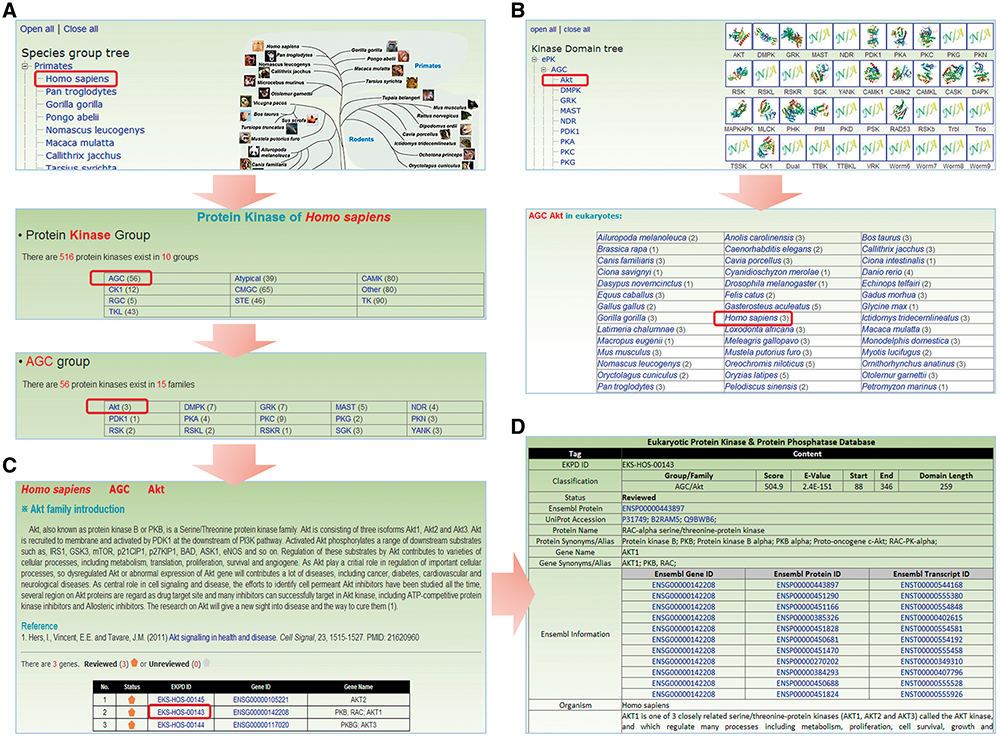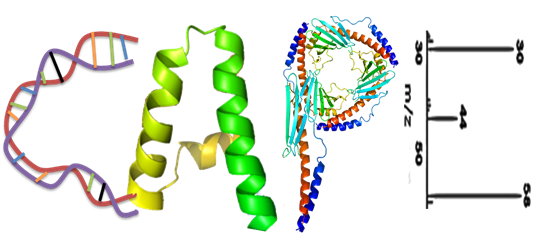![]() What's it?
What's it?
The EKPD 1.1 was lastly updated on Sep 10th, 2013, containing 61,729 unique protein entries including 50,433 protein kinases and 11,296 protein phosphatases. The online service of EKPD was implemented in PHP + MySQL + JavaScript. The database will be updated routinely as new protein kinases or protein phosphatases are reported.
![]() How to use it?
How to use it?
The EKPD database was developed so as to be operable in an easy-to-use manner. Here we provide human protein kinase B (PKB or AKT1) as an example to illustrate the effective usage of EKPD. To make it easy to look through the data in EKPD, two approaches were implemented for the browse option: by species or by classification (Figure 3). In the option of ‘browse by species’, the left tree represents the Ensembl taxonomy categories, including primates, rodents, laurasiatheria and so on, whereas the right tree represents the phylogenetic relationship of the eukaryotic species in Ensembl (18) (Figure 3A). By clicking on the ‘Homo sapiens’ button, the PK and PP groups in H. sapiens can be viewed (Figure 3A). As the Akt family belongs to the AGC group, users can click on the ‘AGC’ button to view the family information (Figure 3A). Also, EKPD can be further browsed by classification (Figure 3B). The left tree represents the hierarchical classification, whereas a representative 3D structure of the catalytic domain was taken from the PDB (31) and presented on the right for each PK or PP family, if available (Figure 3B). Users can click on the ‘Akt’ button to visualize the family information across 70 eukaryotes (Figure 3B). By either clicking on the ‘Akt’ button in the AGC group page (Figure 3A) or the ‘Homo sapiens’ button in the Akt page (Figure 3B), the members in human Akt family can be viewed, while a brief description of Akt functions and regulatory roles is available (Figure 3C). To organize the database, we used EKPD IDs for the PKs (EKS-) and PPs (EPS-), respectively. The Ensembl Gene ID was adopted as the secondary accession (Figure 3C). The users can click on the ‘EKS-HOS-00143’ button to view the detailed information of human AKT1 (Figure 3D). More detailed descriptions of the search and advance options in EKPD were also presented (Supplementary Results and Supplementary Figure S2).
![]() Institute
Institute
Huazhong University of Science and Technology (华中科技大学)
![]() Author
Author
Yongbo Wang(王勇博),Yu Xue(薛宇)
![]() Support
Support
![]() Publication
Publication
![]() Figure
Figure

![]() Funding source
Funding source
[{"id":"1","name":"CNHPP int'l project 3:2014DFB30020(中国人类蛋白质组学数据的知识发现)"}]





